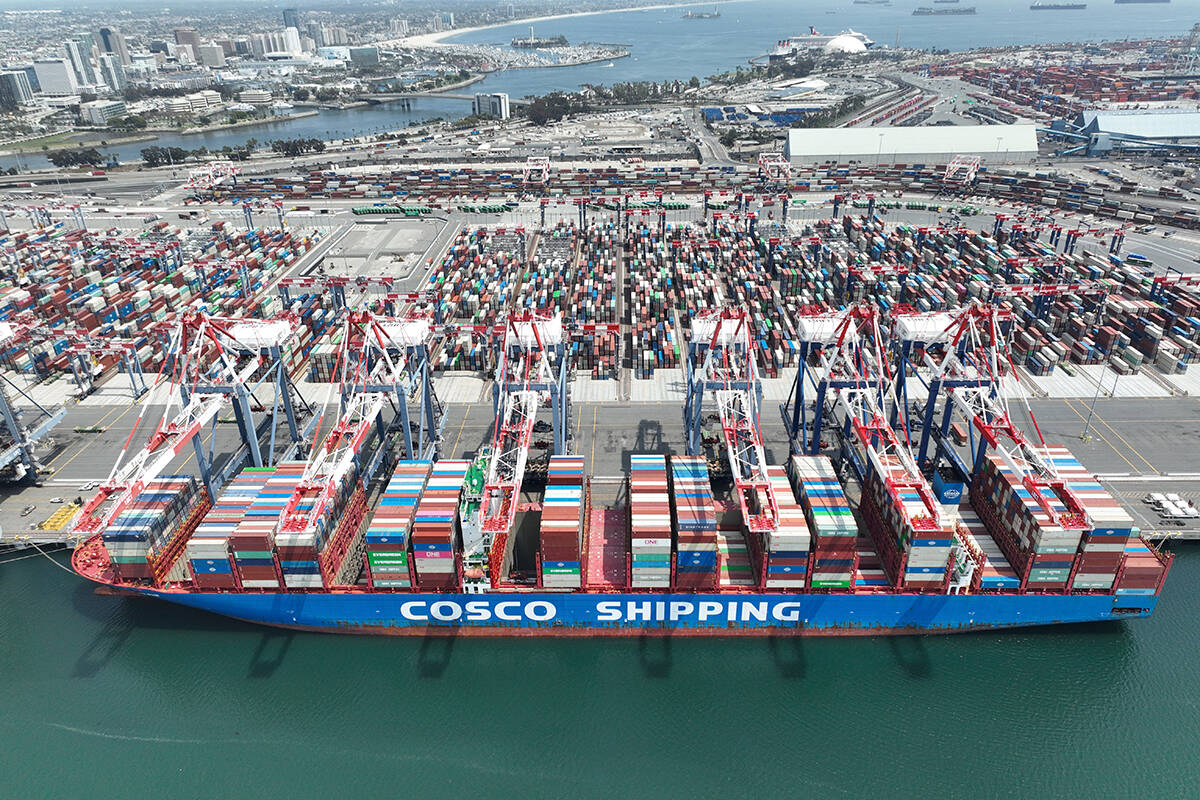Markets react swiftly to reports that senators are asking the U.S. government to reduce biofuel blending mandates
The year-long bull run for soybean oil has likely come to an end, and that is weighing on canola prices, says a grain market analyst.
“There is a very good chance it is (over),” said Todd Hultman, lead analyst for DTN.
July futures for soybean oil hit an all-time high of US$0.7374 per pound in early June before tumbling to $0.5812 a couple weeks later, a 21 percent drop.
“I wouldn’t be surprised if that early-June high stands for the rest of the year,” he said.
Read Also

U.S. softens fees on Chinese shipping
The U.S. starts charging new fees on Chinese ships on Oct. 14. What are the ramifications for their ag exports?
Prices rallied back to $0.6220 as of midday June 28 but were still below the recent highs.
The soybean oil rally started in June of 2020. It was the first agricultural commodity to experience a price boost in the midst of the COVID pandemic.
“The rally really had strong legs,” said Hultman.
“I mean, to sustain itself for an entire year is pretty uncommon.”
The rally started with a tightening of vegetable oil supplies and picked up steam when Malaysia’s palm oil producers ran into labour problems during the COVID pandemic.
It got more legs in 2021 when the world economy perked up and Joe Biden became president of the United States, elected in part on his clean energy platform.
Soybean oil futures hit an all-time high June 7 and then suddenly took a sharp downturn a few days later when Reuters reported that U.S. senators were asking the Biden administration to reduce biofuel blending mandates to help oil refiners in their states.
It was the first bearish news in a year, and the market responded quickly despite the lack of confirmation from the White House or the U.S. Environmental Protection Agency that a rollback in mandates was even under consideration.
Futures prices tumbled 21 percent and renewable identification numbers (RINS) for the biodiesel sector fell to US$1.38 per gallon, down from $2 prior to the Reuters story.
“That really spooked the market out of its bullish mood,” said Hultman.
The ripple effect was felt in the canola market, where prices followed suit.
Hultman believes the price correction was warranted. He never understood why soybean oil prices climbed $0.32 per lb. following Biden’s election because it was going to be difficult to promote increased biodiesel use when soybean oil supplies were so tight.
“That last part of the run-up was a bit suspect and I think this might help people kind of sit back and rethink the whole optimism they had about soybean oil prices,” he said.
He thinks there is plenty of room for soybean oil values to tumble further if the Biden administration decides to help out oil refiners by reducing blending rates.
Even if that doesn’t happen, he said world palm oil production, which is the leader in vegetable oils, is expected to rebound to 76.38 million tonnes in 2021-22, a 3.2 million tonne increase over last year.
Hultman said canola prices closely follow soybean oil values, so there could be more downward pressure looming on canola prices as well.
Barry Coleman, executive director of the Northern Canola Growers Association, an organization representing North Dakota canola growers, thinks canola may not be as closely tied to soybean oil values this year as they usually are.
The canola crop is in huge trouble in North Dakota, which is responsible for 84 percent of U.S. production. Drought may slash production in half in that state.
“I certainly think that canola will probably separate itself from the traditional relationship with soy oil because of that,” he said.
“Soybeans usually drives the market, but there are times like this where canola will break away with its own weather problems.”


















